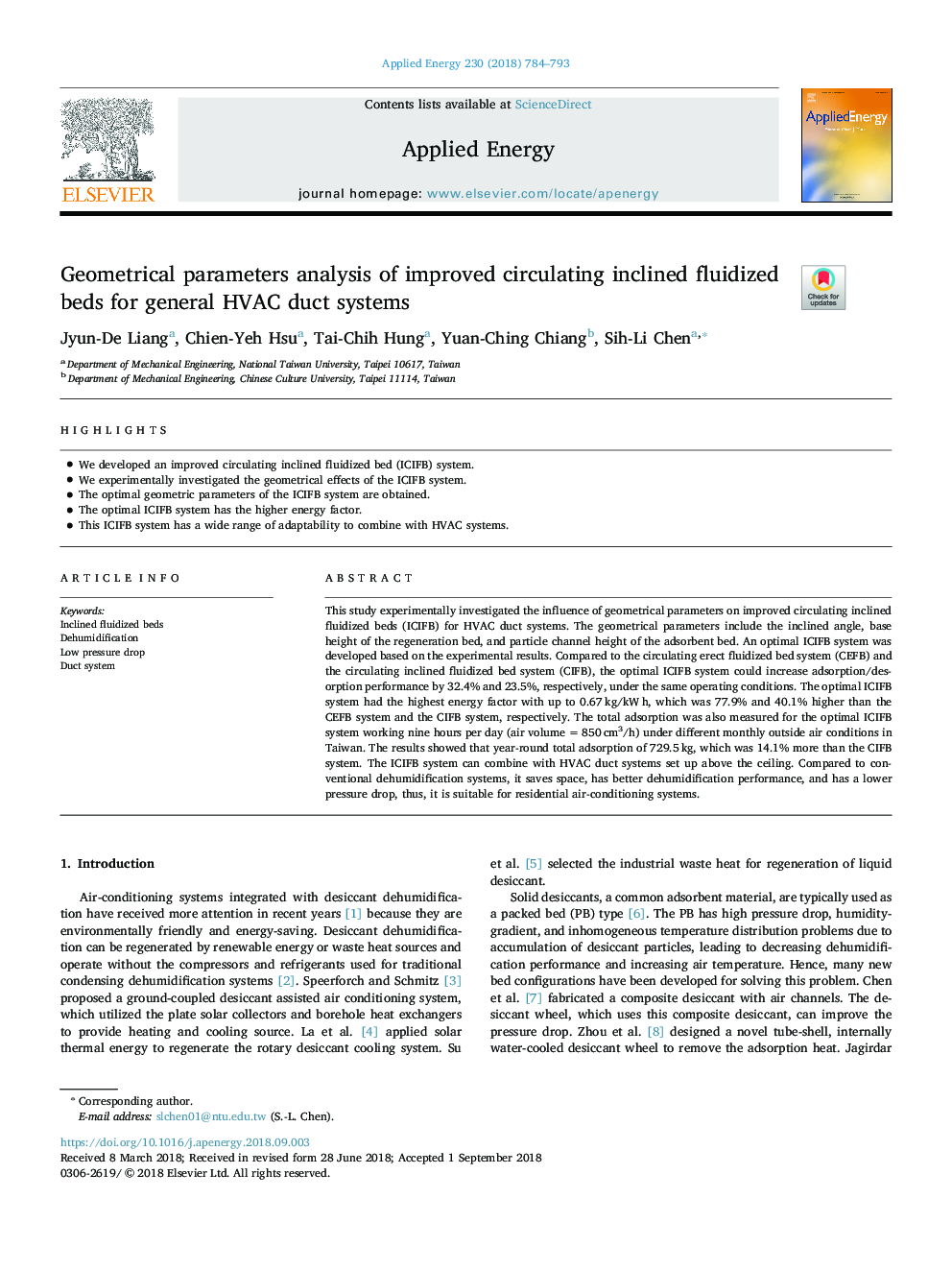| Article ID | Journal | Published Year | Pages | File Type |
|---|---|---|---|---|
| 10131406 | Applied Energy | 2018 | 10 Pages |
Abstract
This study experimentally investigated the influence of geometrical parameters on improved circulating inclined fluidized beds (ICIFB) for HVAC duct systems. The geometrical parameters include the inclined angle, base height of the regeneration bed, and particle channel height of the adsorbent bed. An optimal ICIFB system was developed based on the experimental results. Compared to the circulating erect fluidized bed system (CEFB) and the circulating inclined fluidized bed system (CIFB), the optimal ICIFB system could increase adsorption/desorption performance by 32.4% and 23.5%, respectively, under the same operating conditions. The optimal ICIFB system had the highest energy factor with up to 0.67â¯kg/kWâ¯h, which was 77.9% and 40.1% higher than the CEFB system and the CIFB system, respectively. The total adsorption was also measured for the optimal ICIFB system working nine hours per day (air volumeâ¯=â¯850â¯cm3/h) under different monthly outside air conditions in Taiwan. The results showed that year-round total adsorption of 729.5â¯kg, which was 14.1% more than the CIFB system. The ICIFB system can combine with HVAC duct systems set up above the ceiling. Compared to conventional dehumidification systems, it saves space, has better dehumidification performance, and has a lower pressure drop, thus, it is suitable for residential air-conditioning systems.
Keywords
Related Topics
Physical Sciences and Engineering
Energy
Energy Engineering and Power Technology
Authors
Jyun-De Liang, Chien-Yeh Hsu, Tai-Chih Hung, Yuan-Ching Chiang, Sih-Li Chen,
